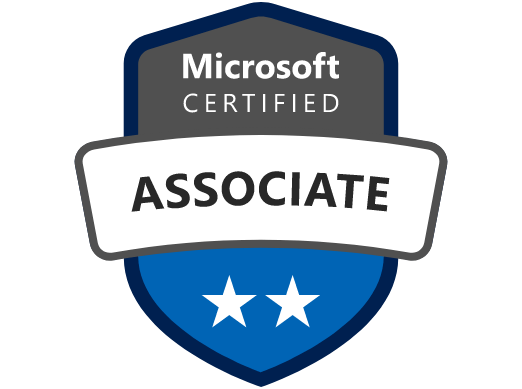
Course Description
This course is designed to build your foundation in Dynamics 365 Supply Chain Management application knowledge. This course will cover the most important features and functionalities needed by Dynamics 365 Supply Chain Management functional consultant including: The product information and how to configure, create, and manage your product and inventory. Supply chain management configuration and processing. The transportation management features, and the warehouse management features. Quality management and quality control functionalities. Master planning configuration and processing. This course includes lectures and several hands-on exercises. The exercises will be introduced to you in the form of a case study presented to a Dynamics 365 Supply Chain Management functional consultant. Each exercise will be based on a business scenario followed by a question or discussion then a step-by-step guidance to perform the system related steps.
Audience Profile
This course is designed for The Dynamics 365 Supply Chain Management functional consultant. The Dynamics 365 Supply Chain Management functional consultant is a key resource that designs and configures apps to meet the requirements for a customer. The functional consultant analyzes business requirements and translates those requirements into fully realized business processes and solutions that implement industry-recommended practices. The functional consultant specializes in one or more of the following feature sets of Dynamics: finance, manufacturing, or supply chain management. They partner with architects, developers, administrators, and other stakeholders to deliver solutions that meet or exceed the needs of their customers.
About this course
Course Outline
Create and manage products
-
Create and release products and product variants
-
Create and apply product templates
-
Create BOMs and BOM versions
-
Create and configure category hierarchies
-
Create and manage product states during the life cycle of a product
-
Create product attributes
-
Configure storage, tracking, and product dimension groups
-
Create item model groups
-
Describe use cases for item groups
-
Configure reservation hierarchies
-
Configure unit sequence groups
-
Create and assign bar codes and Global Trade Item Number (GTIN) codes
-
Configure product unit conversions
-
Configure default order settings
-
Configure product filter codes for warehouse operations
-
Describe costing versions for standard and planned costs
-
Describe how price groups constrain pricing
-
Configure items with standard costs
-
Configure default item prices, purchase prices, and discounts in trade agreements
-
Create and manage inventory dimensions
-
Configure Inventory management parameters and journals
-
Configure inventory value reports
-
Configure ABC classifications
-
Create and process journals, including bill of materials, item arrival, transfer, movement, inventory adjustment, and counting, journals
-
Create and process transfer orders
-
Describe the inventory closing and adjustment process
-
Configure and perform inventory closings and adjustments
-
Apply inventory blocking manually
-
Create batch disposition codes
-
Configure and process nonconformances
-
Configure quality associations
-
Configure components for the quality control process
-
Process quality orders
-
Process quarantine orders
-
Describe use cases for inventory blocking using a quality order
-
Create and manage work orders
-
Create and configure assets
-
View and manage capacity for work orders
-
Configure work order settings
-
Schedule preventive maintenance and reactive maintenance
-
Create and maintain vendors
-
Describe use cases for procurement workflows
-
Create and manage purchase requisitions, requests for quotation (RFQs), and purchase orders (POs)
-
Create purchase agreements and vendor rebates
-
Configure and process consignment inventory
-
Manage over and under deliveries and delivery schedules
-
Configure procurement categories, charge codes, and purchasing policies
-
Configure vendor collaboration features
-
Create and process vendor returns
-
Describe landed cost concepts and terminology
-
Identify use cases for transportation management module and landed cost modules
-
Create and maintain customers
-
Describe sales order reservations and order promising
-
Configure sales agreements
-
Configure and process sales quotations, sales orders, and sales returns
-
Configure sales groups, commissions
-
Configure and manage discounts and price groups
-
Configure and process intercompany orders
-
Configure customer rebates
-
Create sites, warehouses, locations, location formats, location profiles, location types, and zones
-
Create and manage warehouse workers
-
Configure work policies and work breaks
-
Implement location directives
-
Configure inventory statuses
-
Configure wave, load, and work templates
-
Configure mobile device menus, menu items, and display settings
-
Create and print labels, including product, wave, and license plate labels
-
Describe the replenishment process and cross-docking
-
Describe the capabilities of the load planning workbench
-
Configure and process inventory movements
-
Create cycle counting work and perform cycle counting
-
Process inbound and outbound orders
-
Update inventory statuses
-
Configure containerization and packaging options
-
Configure shipping carriers and carrier groups
-
Perform planning and executing of loads and shipments
-
Configure and generate freight bills and invoices
-
Configure route plans and guides
-
Configure route and rate engines
-
Configure and use dock appointment scheduling
-
Reconcile freight by using manual or automatic processes
-
Describe the various types of forecasting available
-
Configure Planning Optimization Add-in for Microsoft Dynamics 365 Supply Chain Management
-
Describe planning optimization fit analysis results
-
Set up coverage groups and item coverage
-
Configure and maintain master planning parameters, master plans, and forecast plans
-
Define positive and negative days
-
Define action messages, delay messages, and time fences
-
Configure period templates
-
Run master planning
-
View and process planned orders
-
Set up and use the Supply Schedule form
-
Configure safety margins
-
Configure and process safety stock journals
Where
This will be a virtual event hosted on Microsoft Teams. In the Microsoft Teams platform and sessions, your name, email address, or title may be viewable by other participants. By joining this event, you agree to this experience.
Duration
5 days
